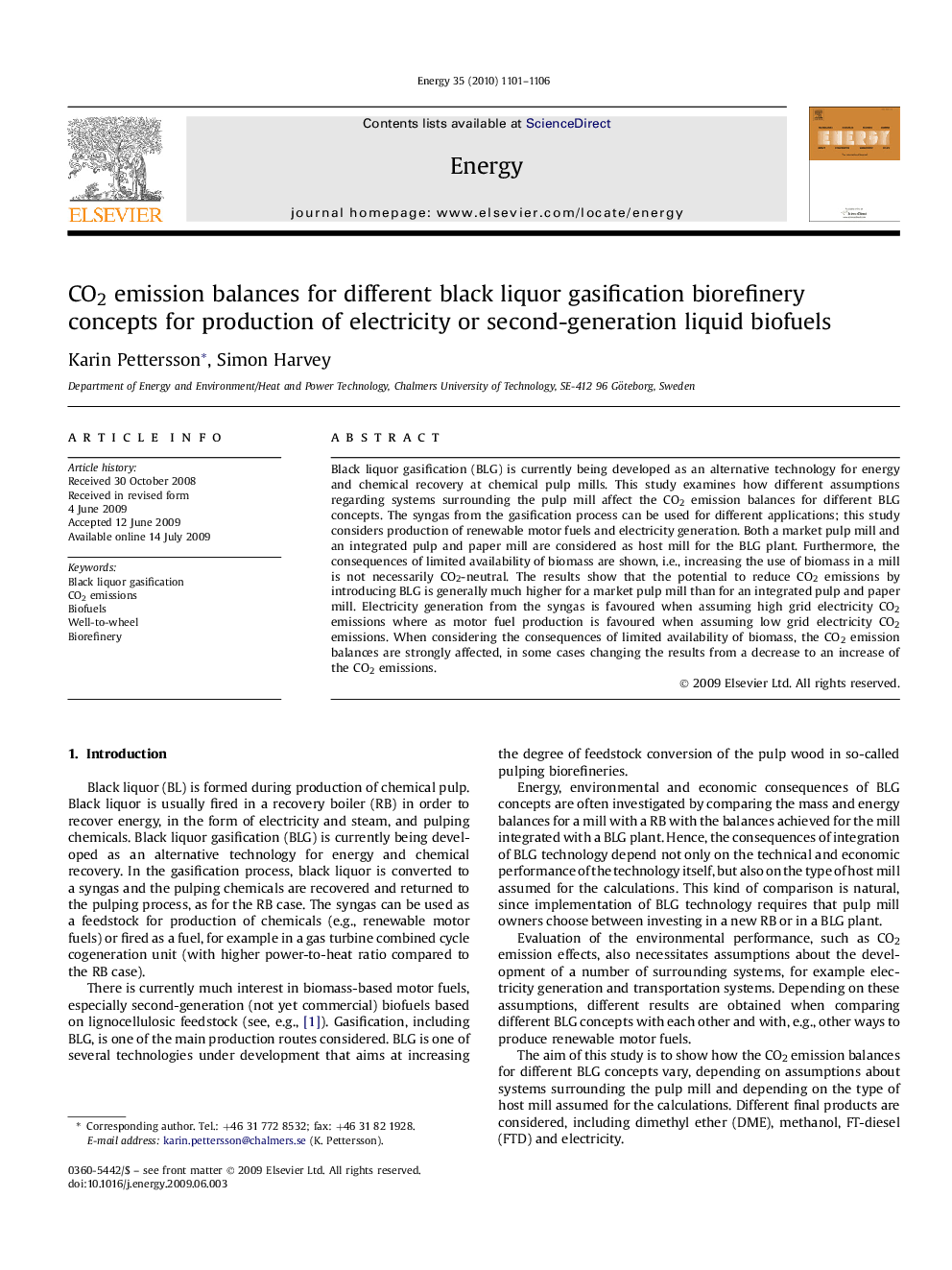| Article ID | Journal | Published Year | Pages | File Type |
|---|---|---|---|---|
| 1735470 | Energy | 2010 | 6 Pages |
Black liquor gasification (BLG) is currently being developed as an alternative technology for energy and chemical recovery at chemical pulp mills. This study examines how different assumptions regarding systems surrounding the pulp mill affect the CO2 emission balances for different BLG concepts. The syngas from the gasification process can be used for different applications; this study considers production of renewable motor fuels and electricity generation. Both a market pulp mill and an integrated pulp and paper mill are considered as host mill for the BLG plant. Furthermore, the consequences of limited availability of biomass are shown, i.e., increasing the use of biomass in a mill is not necessarily CO2-neutral. The results show that the potential to reduce CO2 emissions by introducing BLG is generally much higher for a market pulp mill than for an integrated pulp and paper mill. Electricity generation from the syngas is favoured when assuming high grid electricity CO2 emissions where as motor fuel production is favoured when assuming low grid electricity CO2 emissions. When considering the consequences of limited availability of biomass, the CO2 emission balances are strongly affected, in some cases changing the results from a decrease to an increase of the CO2 emissions.
